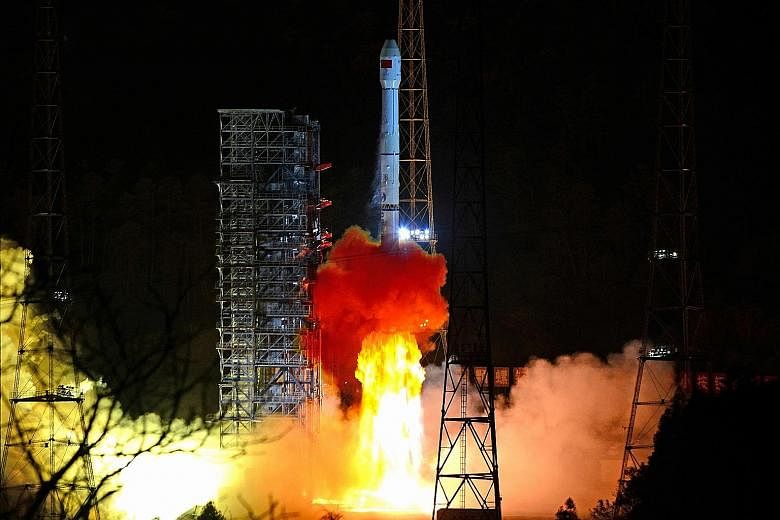SHANGHAI • A Chinese space probe is moving into position to land on the dark side of the moon for the first time, the official Xinhua news agency reported yesterday, a mission seen as an important step as the country looks to push forward its space programme.
The probe, the Chang'e-4, entered a planned orbit yesterday "to prepare for the first soft landing on the far side of the moon", Xinhua said, citing the China National Space Administration. It did not say when the landing would occur.
The moon is tidally locked to Earth, rotating at the same rate that it orbits the planet, so the far side - or the "dark side" - is never visible from Earth. Previous spacecraft have seen the far side of the moon, but none has landed on it.
China launched the Chang'e-4 probe earlier this month, carried by a Long March-3B rocket. It includes a lander and a rover to explore the surface of the moon.
Xinhua said that the probe had entered an elliptical lunar orbit at 8.55am, which brought it at its closest point just 15km away from the surface of the moon. The Chang'e-4 first entered a lunar orbit on Dec 12.
The Chang'e-4's tasks include astronomical observation, surveying the moon's terrain, land form and mineral composition, and measuring the neutron radiation and neutral atoms to study the environment on the far side of the moon.
China aims to catch up with Russia and the United States to become a major space power by 2030. It is planning to launch construction of its own manned space station next year. However, while China has insisted its ambitions are purely peaceful, the US Defence Department has accused it of pursuing activities aimed at preventing others from using space-based assets in a crisis.
The space control centre will select a proper time to land the probe on the far side of the moon, Xinhua said. Its descent is being aided by a relay satellite, the Queqiao, or Magpie Bridge.

